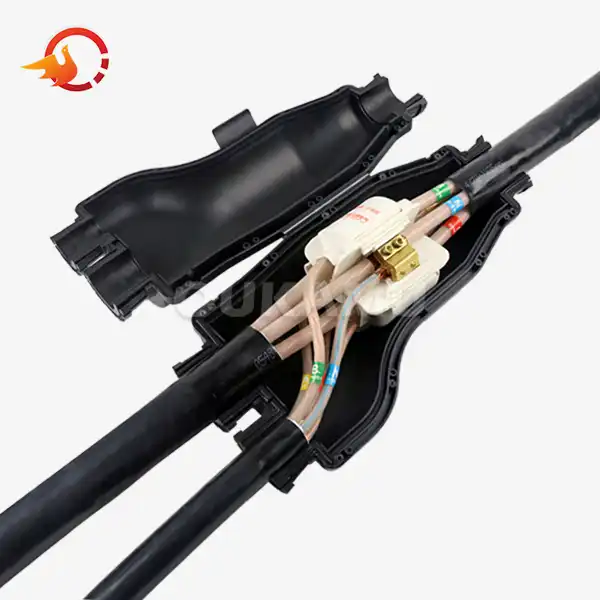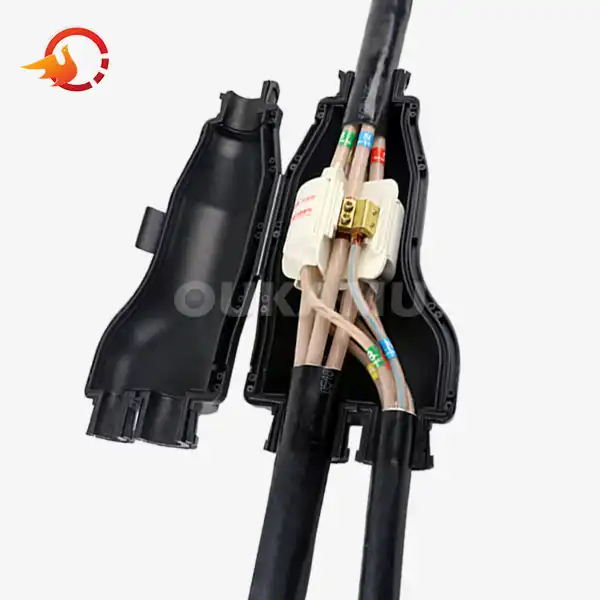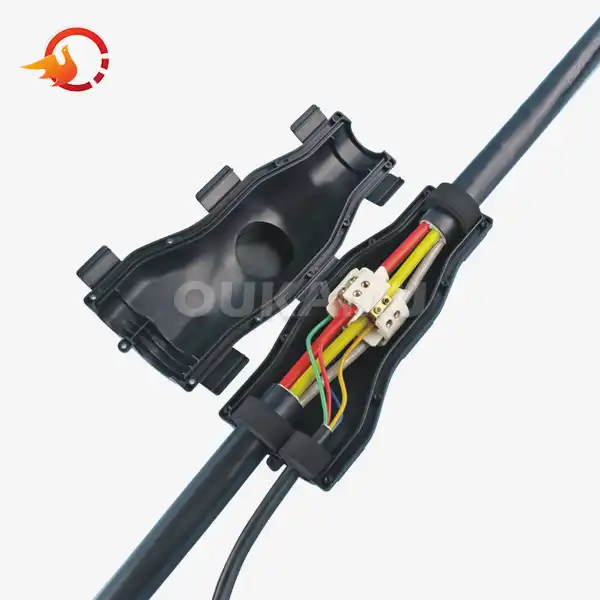How to Maintain Power Cable Joints for Long-Term Performance?
 2025-08-13 07:47:48
View:389
2025-08-13 07:47:48
View:389Power cable joints play a crucial role in electrical systems, ensuring seamless connections and uninterrupted power distribution. Proper maintenance of these joints is essential for their longevity and optimal performance. This comprehensive guide will explore effective strategies to maintain power cable joints, ensuring their reliability and durability over time.
Understanding the Importance of Power Cable Joint Maintenance
Power cable joints are vital components in electrical networks, serving as connection points between cables. These joints are subject to various stresses, including electrical, thermal, and mechanical forces. Regular maintenance is imperative to prevent failures, minimize downtime, and extend the lifespan of your electrical system.
Common Issues Affecting Power Cable Joints
Several factors can compromise the integrity of power cable joints:
- Moisture ingress
- Overheating
- Mechanical stress
- Corrosion
- Partial discharge
By understanding these potential issues, maintenance professionals can implement targeted strategies to mitigate risks and enhance joint performance.
The Impact of Proper Maintenance on Joint Longevity
Implementing a robust maintenance program for power cable joints yields numerous benefits:
- Reduced risk of unexpected failures
- Improved system reliability
- Extended service life of joints and cables
- Lower long-term maintenance costs
- Enhanced safety for personnel and equipment
Investing time and resources in joint maintenance pays dividends in the form of a more stable and efficient electrical network.
Essential Maintenance Techniques for Power Cable Joints
To ensure the long-term performance of power cable joints, a comprehensive maintenance approach is necessary. This section outlines key techniques and best practices for maintaining these critical components.
Regular Visual Inspections
Visual inspections are the cornerstone of an effective maintenance program. Conduct routine checks to identify:
- Signs of physical damage or deterioration
- Discoloration or scorching
- Loose connections or hardware
- Evidence of moisture ingress or corrosion
These inspections should be performed at regular intervals, with frequency determined by the operating environment and criticality of the system.
Thermal Imaging and Temperature Monitoring
Thermal imaging is a non-invasive technique that can reveal potential issues before they escalate into major problems. Use infrared cameras to:
- Detect hotspots indicative of poor connections or overloading
- Monitor temperature variations across joints
- Identify areas of excessive heat generation
Establish baseline temperature profiles for each joint and track changes over time to detect anomalies early.
Electrical Testing and Diagnostics
Periodic electrical testing is essential for assessing the health of power cable joints. Key tests include:
- Insulation resistance testing
- Partial discharge measurements
- Tan delta (dissipation factor) testing
- Time domain reflectometry (TDR) for locating faults
These tests provide valuable insights into the electrical integrity of joints and can help predict potential failures before they occur.
Cleaning and Contamination Control
Maintaining a clean environment around power cable joints is crucial for their longevity. Implement the following practices:
- Regular cleaning of joint surfaces to remove dust and debris
- Application of appropriate sealants to prevent moisture ingress
- Use of dehumidifiers in high-humidity environments
- Proper disposal of cleaning materials to avoid contamination
A clean joint is less susceptible to partial discharge and other electrical issues that can lead to premature failure.
Proper Torque Management
Maintaining correct torque on bolted connections is vital for joint reliability. Implement a torque management program that includes:
- Regular checks of bolt tightness
- Use of calibrated torque wrenches
- Documentation of torque values for each joint
- Reapplication of torque after thermal cycling
Proper torque management ensures consistent electrical contact and minimizes the risk of loose connections.
Advanced Strategies for Optimizing Power Cable Joint Performance
Beyond basic maintenance techniques, several advanced strategies can further enhance the performance and longevity of power cable joints.
Implementing Condition-Based Monitoring
Condition-based monitoring (CBM) uses real-time data to assess joint health and predict maintenance needs. Key components of a CBM system include:
- Continuous temperature sensors
- Partial discharge monitoring equipment
- Data acquisition and analysis software
- Integration with existing SCADA systems
By transitioning from time-based to condition-based maintenance, organizations can optimize resource allocation and minimize unnecessary interventions.
Utilizing Advanced Joint Technologies
Incorporating modern joint technologies can significantly improve performance and ease of maintenance:
- Smart joints with built-in sensors for real-time monitoring
- Self-healing materials that can repair minor damage autonomously
- Advanced insulation systems with improved thermal and electrical properties
- Modular designs for easier installation and replacement
Staying abreast of technological advancements in joint design can lead to more reliable and maintainable electrical systems.
Comprehensive Training and Skill Development
Investing in the skills of maintenance personnel is crucial for effective joint management:
- Regular training on latest maintenance techniques and technologies
- Certification programs for joint installation and maintenance
- Cross-training to ensure a versatile maintenance team
- Collaboration with joint manufacturers for specialized training
A well-trained workforce is better equipped to identify potential issues and implement proactive maintenance strategies.
Environmental Control and Protection
Creating an optimal environment for power cable joints can significantly extend their lifespan:
- Installation of proper ventilation systems to manage heat
- Use of protective enclosures to shield joints from environmental factors
- Implementation of climate control in critical areas
- Regular monitoring of environmental conditions around joints
By controlling the environment, many common causes of joint degradation can be mitigated or eliminated.
Data-Driven Maintenance Planning
Leveraging data analytics can transform maintenance practices:
- Collection and analysis of historical maintenance data
- Predictive modeling to forecast joint failures
- Risk-based maintenance scheduling
- Integration of maintenance data with asset management systems
Data-driven approaches enable more efficient resource allocation and proactive maintenance interventions.
Conclusion
Maintaining power cable joints for long-term performance requires a multifaceted approach combining traditional techniques with advanced strategies. By implementing comprehensive inspection routines, leveraging modern technologies, and fostering a culture of continuous improvement, organizations can significantly enhance the reliability and longevity of their electrical systems.
Regular maintenance not only prevents costly failures but also contributes to improved safety, reduced downtime, and optimized operational efficiency. As power distribution networks continue to evolve, the importance of effective joint maintenance will only increase.
For more information on innovative cable connection solutions and expert advice on maintaining power cable joints, contact Xi'an Oukamu Electric Co., Ltd. at info@okmbranchcable.com. Our team of specialists is dedicated to helping you achieve optimal performance and reliability in your electrical systems.
References
1. Smith, J. (2022). "Power Cable Joint Maintenance: Best Practices and Emerging Technologies." IEEE Transactions on Power Delivery, 37(2), 1021-1035.
2. Johnson, M., & Brown, L. (2021). "Condition-Based Monitoring of High Voltage Cable Joints: A Comprehensive Review." International Journal of Electrical Power & Energy Systems, 128, 106736.
3. Patel, R. (2023). "Advanced Diagnostic Techniques for Power Cable Joint Assessment." CIGRE Science & Engineering, 25, 5-15.
4. Zhang, Y., et al. (2020). "Thermal Imaging in Power Cable Joint Maintenance: Applications and Challenges." Electric Power Systems Research, 189, 106782.
5. Lee, K., & Wilson, S. (2022). "Environmental Factors Affecting Power Cable Joint Performance: A Long-Term Study." IEEE Electrical Insulation Magazine, 38(4), 7-14.















